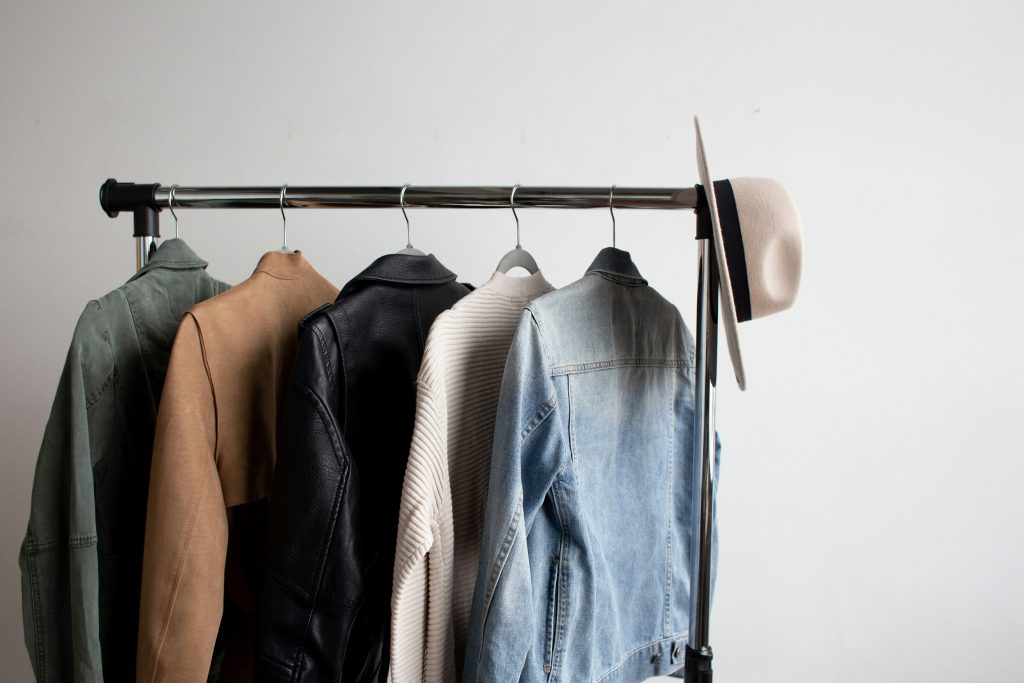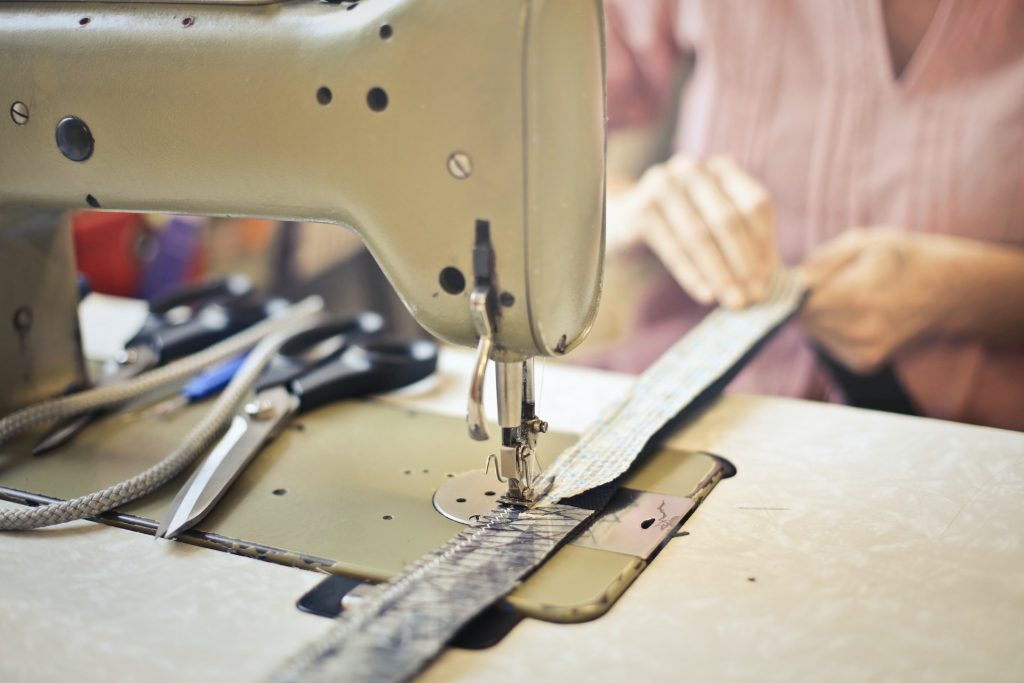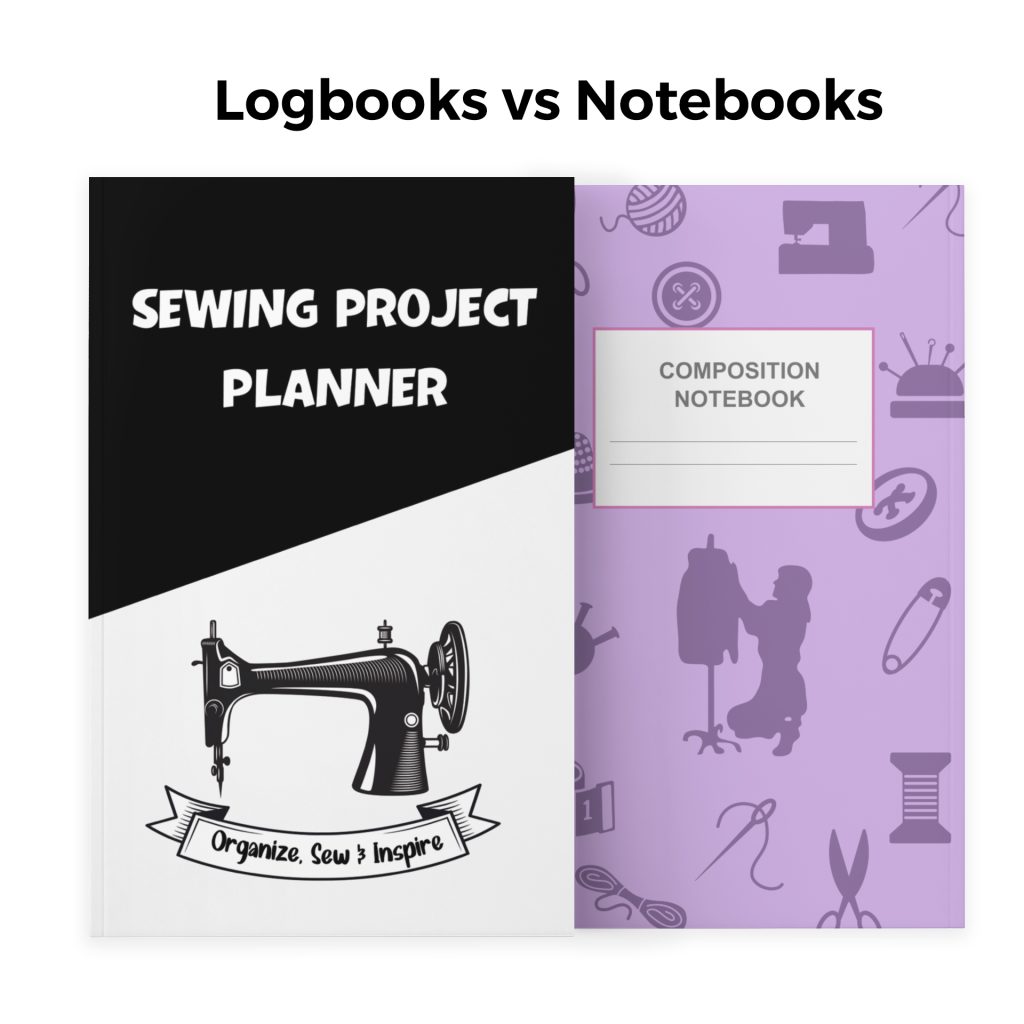Upcycling clothes isn’t just some fancy way to say “wearing old stuff” (although, let’s be real, sometimes that’s exactly what it is). It’s more like taking an unwanted piece from your closet and giving it a cool makeover, turning it into something completely new and amazing. Do you still have your favorite stained t-shirt from high school? It might turn into a charming grocery tote bag!
Whether you’re a complete beginner or you can whip up a dress blindfolded, these tips are a great place to start. Let’s dive in and get upcycling!
1. Essential Tools for Upcycling Clothes
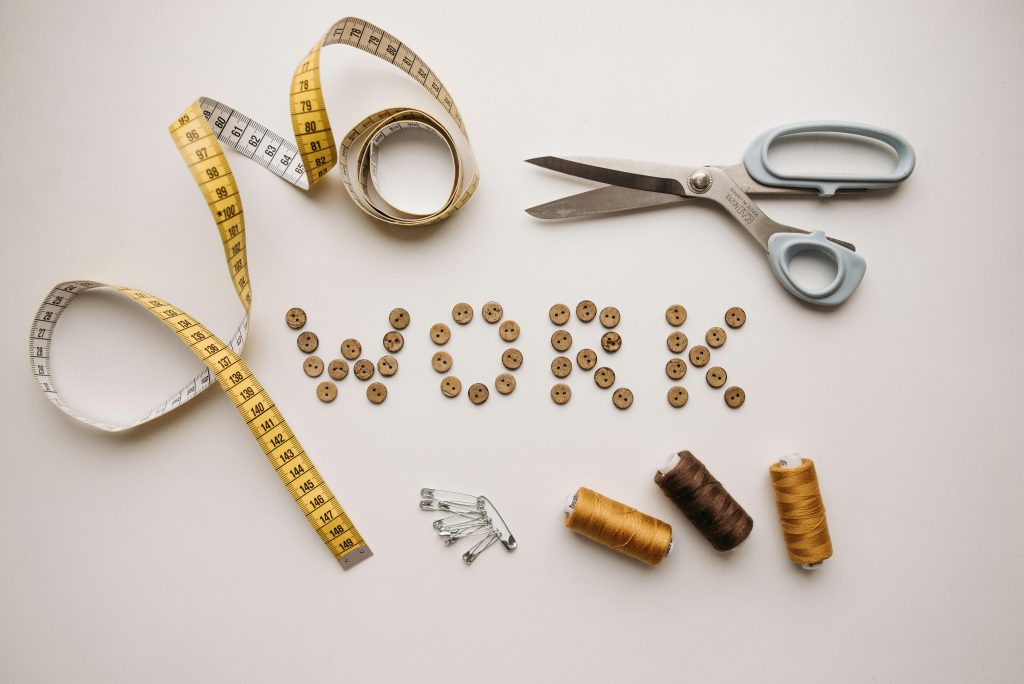
Get into the world of upcycling with a few essential tools that will help you transform your old wardrobe into unique, personalized pieces! The list below includes tools that I have found handy while upcycling clothes:
- Needles
- Seam Rippers
- Threads
- Fabric scissors
- Pins
- Rulers
- Measuring tape
- Marking tools
Consider keeping water-soluble paper for embroidery designs and repurpose materials from second-hand clothing or thrift store finds.
2. Learn Simple Repair Techniques

Before going into creative transformations, consider mastering some essential repairs. Learn to mend small holes, reinforce loose seams, replace missing buttons and more.
These skills not only extend the lifespan of your clothes but also become the building blocks for exciting alterations. Plus, don’t be afraid to wield the seam ripper – it’s your secret weapon for dismantling unwanted details and paving the way for a truly customized look.
3. Explore No-Sew Ways to Upcycle Clothes

Sewing is fantastic, but don’t underestimate the power of no-sew! While mastering sewing skills opens up a world of upcycling possibilities, incorporating no-sew techniques alongside them can truly elevate your creations.
Here’s why :
- Beyond the Basics: Sewing might be the foundation, but no-sew techniques add exciting layers of texture and detail. Different elements add visual interest and can even tell a story through their placement and selection.
- Accessibility for All: No-sew methods are perfect for beginners or those intimidated by sewing. They allow anyone to jump into the world of upcycling without needing advanced skills.
- Unleash Your Creativity: You can experiment with different fabric manipulation techniques, like fraying edges for a distressed look or creating ruffles with simple tying methods.
4. Understand Garment Design Elements
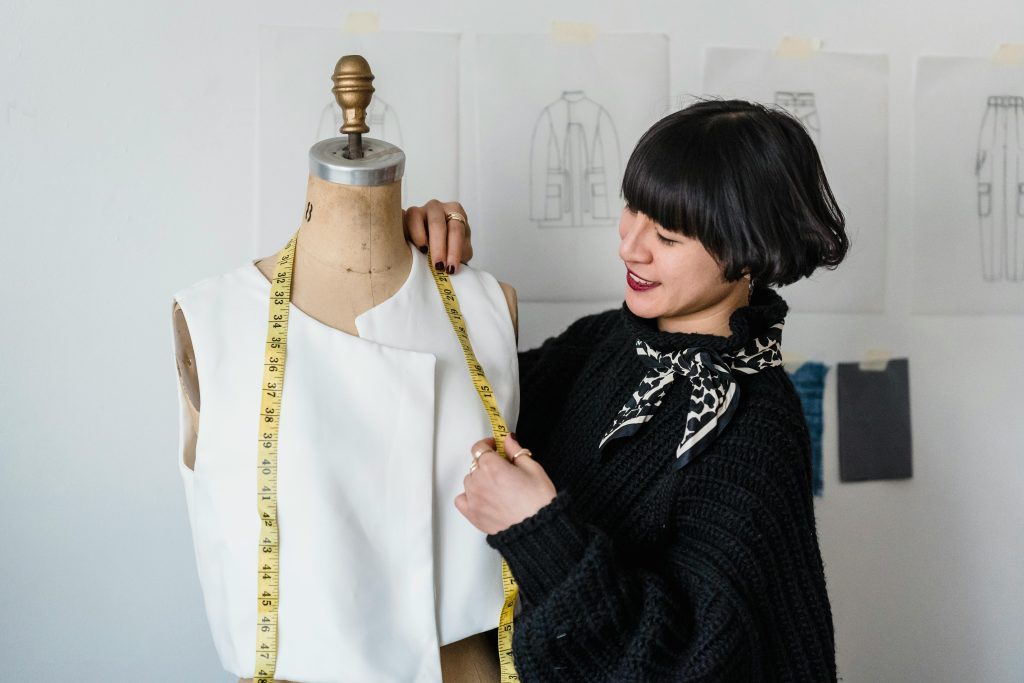
Upcycling clothes isn’t just about grabbing the scissors and going wild! Developing a foundational understanding of garment design can unlock a whole new level of creative potential. This means taking a closer look at how clothes are actually put together.
Learn about different types of seams, hems, fabrics and more. By demystifying these garment design elements, you’ll be able to identify areas ripe for upcycling magic, allowing you to make informed decisions about how to breathe new life into your wardrobe.
5. Begin with Items Suited for Simple Upcycling
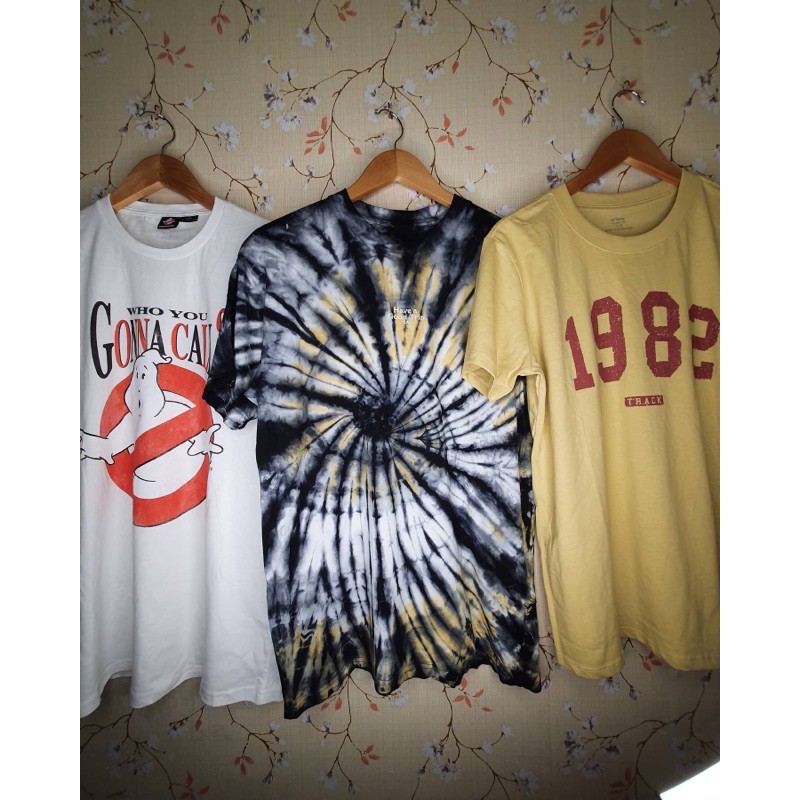
Begin with items suited for simple transformations. Think classic wardrobe staples like T-shirts, jeans, or button-down shirts. These pieces often have clean lines and offer a blank canvas for your creativity. Mastering a basic t-shirt transformation, like adding a cool new neckline or dying it a vibrant color!
This newfound confidence will then fuel your desire to tackle more complex projects. Imagine taking those well-loved jeans and turning them into a trendy pair of distressed shorts or a stylish skirt. By starting simple and gradually progressing to more intricate upcycles, you’ll develop your skills and expand your upcycling repertoire, all while building a unique and personalized wardrobe that reflects your own style.
6. Get Creative with Your Clothes Upcycling Ideas
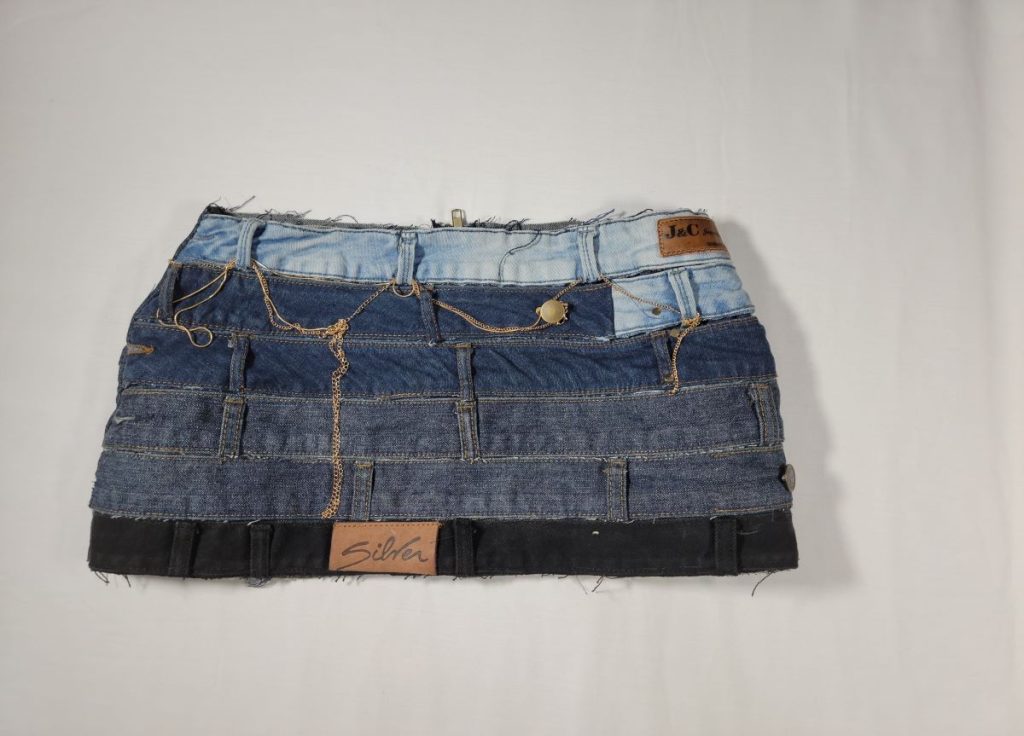
This is where the magic truly happens. Don’t be afraid to mix and match fabrics from different garments. Experiment with dyeing techniques! Tie-dye is a classic, but there are endless possibilities, from ombré to dip-dyeing. The sky’s the limit! Feeling bold? Transform those old jeans into trendy skirts with waistbands.
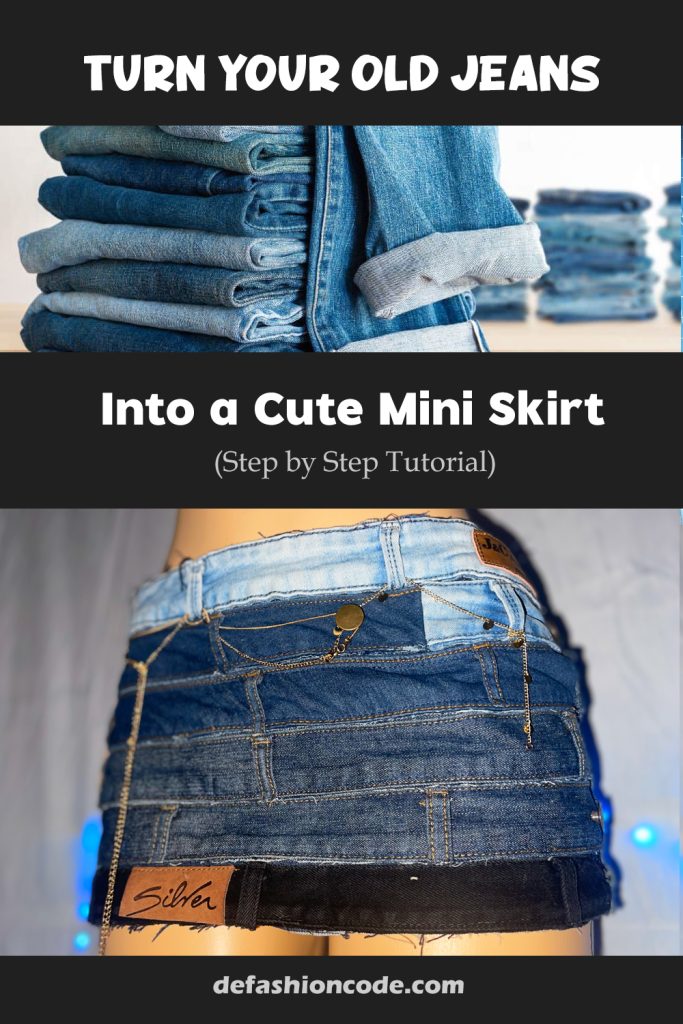
Patches aren’t just for covering holes anymore! Create unique patches from leftover fabric scraps or vintage finds to add a one-of-a-kind touch to any garment. Embrace this stage of upcycling as an opportunity to express your personal style and let your creativity run wild!
7. Go Beyond Making Upcycled Clothing
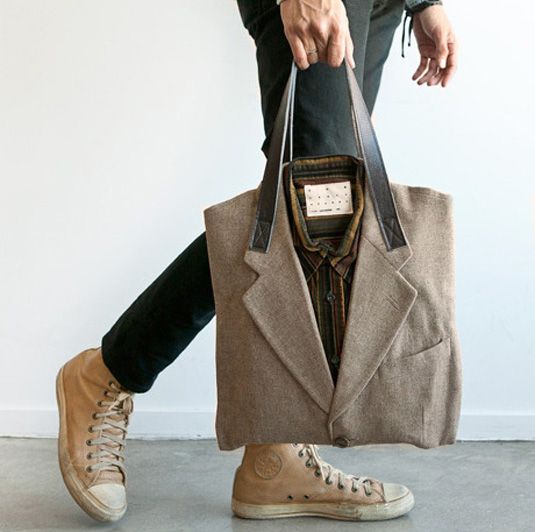
Upcycling doesn’t stop at clothing – it’s a philosophy that can be applied to your entire wardrobe! Go beyond making upcycled clothing and explore the exciting world of transforming accessories.
Have a collection of tired handbags or belts gathering dust? Reimagine them! Deconstruct a leather belt and use the strips to create a woven bracelet or a chic headband. Turn a forgotten tote bag into a trendy clutch by adding a bold geometric pattern with fabric paint. The possibilities are endless! Hats are another upcycling playground. A straw hat can be adorned with colorful ribbons or a vintage scarf. A wool fedora could be given a new lease on life with a playful pom-pom or a contrasting band. Remember, upcycling isn’t just about creating new things, it’s also about rediscovering the potential within the old.
Bonus Tip: Share Your Journey on Social Media
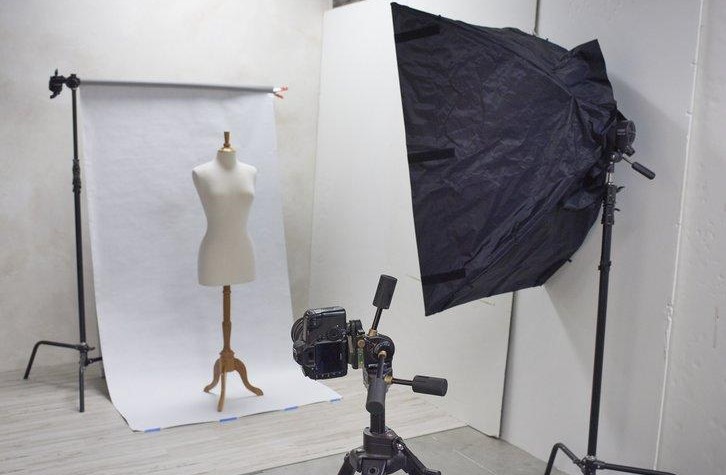
If you haven’t you can start Sharing your journey on social media and inspire others to embrace sustainable fashion. Document your upcycled creations, from the initial inspiration to the final product. Offer tips and tricks you’ve learned along the way. By sharing your passion for upcycling, you’ll not only inspire others to give their clothes a second life, but you’ll also contribute to a more sustainable fashion future.
Conclusion
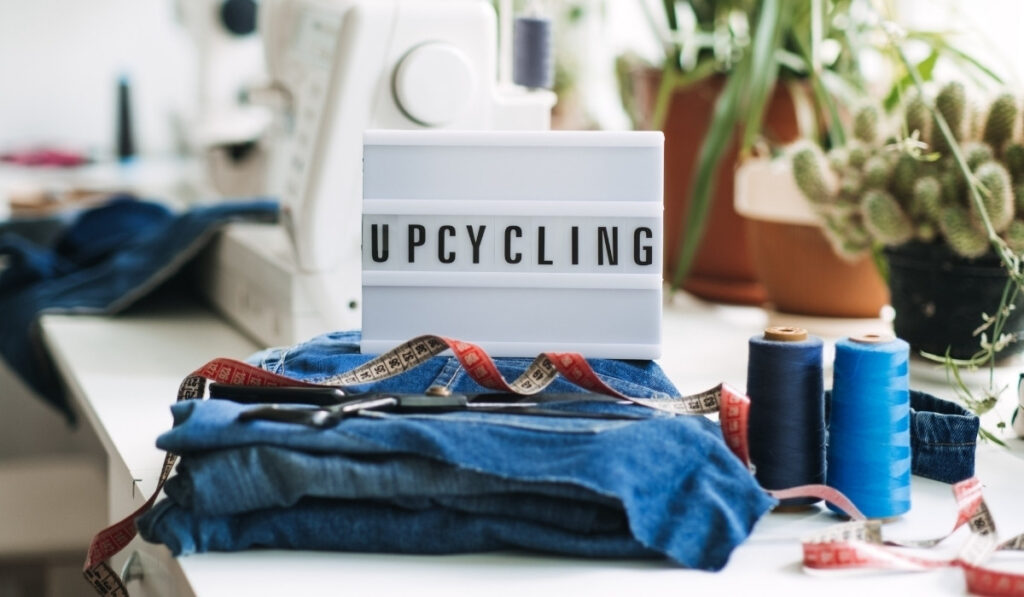
Upcycling isn’t just about saving money—it’s about transforming the ordinary into the extraordinary. By following these helpful tips, you’ll not only create unique pieces but also contribute to a more sustainable fashion industry.
If you have any extra Upcycling tips comment below!

